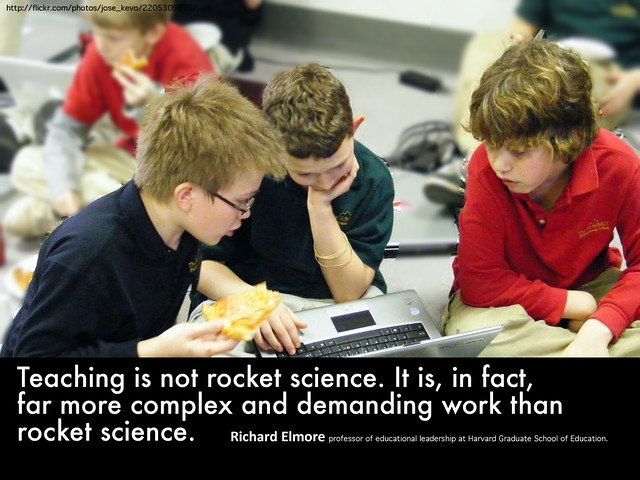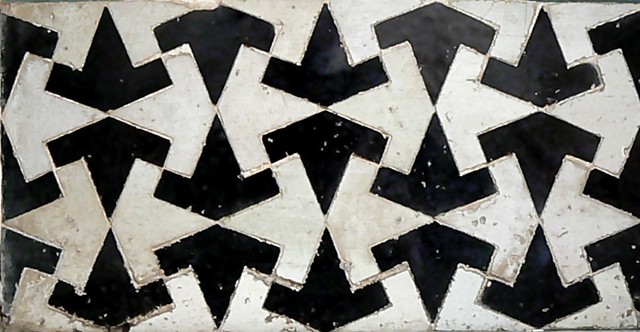 Dr. Thomas Reeder, Associate Superintendent of Wyoming Public Schools, was kind enough to come talk to our secondary mathematics student teachers about life after student-hood. He has had an amazing career already, starting as a K-12 certified teacher and becoming a literally award-winning administrator. He gave me permission to take notes to share.
Dr. Thomas Reeder, Associate Superintendent of Wyoming Public Schools, was kind enough to come talk to our secondary mathematics student teachers about life after student-hood. He has had an amazing career already, starting as a K-12 certified teacher and becoming a literally award-winning administrator. He gave me permission to take notes to share.You might here someone say, "The best thing about teaching is June, July and August", but that is nowhere near true. The best thing is the students. Decent pay and benefits, but it's the students that are why you teach.
This is a good time to be a math teacher because of retiring teachers (state buyouts) and Michigan's new 4 year math requirement. There are some jobs. Science minors are excellent, too. As you're getting ready to apply, you want to think about what sets you apart.
There are different certifications: state certification and highly qualified. Major or minor, plus certification test equals highly qualified. Sciences and social sciences are content specific. In your materials, be clear about what you are qualified to teach. Once you're hired, the district will put you where you are needed. Know the Michigan Merit Curriculum, which has changed even since you were in high school. Four years of math, English and science, a world language, health, etc.
Figure out which students you want to teach. Figure out where you want to teach. The state, the type of area, urban or near-urban... but evaluate where you want to be. Rural teachers whose schools have not been able to hire new teachers for consecutive years.
Michigan teachers are paid well (top 3) with much lower cost of living than other high-paying states. You will never be affluent, except for what you get from your students.
Resume
 |
| L Hollis @ Flickr |
What to do to get ready: be involved in educationally relevant experiences. What do you do outside of your teaching? Conferences, tutoring, coaching, special events like a math night or tutoring night, etc. The more you have those experiences the better. I'm looking at between 100 and 1000 resumes. If you're a rookie, what else have you done that makes you not a rookie.
The two crucial areas of relationships are with parents of students, and with your peers. 100% of parents believe that there kids are 100% innocent... what will you do? Get experiences with conferences. We have a principal who can remain calm in the face of full out screaming and cursing. You don't need to take it: "I'm not going to talk with you now if you can't speak civilly..." give a warning. But then you can hang up.
Other work experiences can be valuable if they build up the image of who you are. Never lie on your resume. Never - that's a firing offense. If you were fired from a job, you can still put it on. When you're asked for employment history, you need to be complete.
I've only put my educationally relevant jobs - should I put the other ones? Sure. Maybe going back to senior year of high school. Does your experience show the ability to balance? Loyalty?
Should I list volunteering in high school, or is that too far back? I would put it in.
Should I list a full education history? Yes. High school plus all your colleges.
You can list or not list you GPA on your resume, but I always look at transcripts. I don't want all A's, but I want to know about retakes, how long, what kind of student you were. Some of the teachers who have struggled for us, also struggled in college.
Personalities are more important now than before; maybe you've heard about speed interviews - we might use those as kind of a screener before more in depth interviews. Now while you're a student, belong to the professional organizations. It's dirt cheap and they are valuable. Then make sure they're listed on the resume.
Get your resume down to two pages. Include relevant personal interests. One person got a job because they listed skiing and they needed someone for ski club. Schools will want you to have multiple roles, coaching, clubs, drama, etc. Plus, as a teacher, it is going to help you see your students in a different way. And help them see you in a different way.
The number of mistakes on resumes is unbelievable. You need to proof them and clean them up totally. If you're not good at it, get help. Even a professional. The resume isn't tailored to a specific job... that's the...
Cover Letter
With internet applications we went from dozens to hundreds of applications. The cover letter is how you tailor your application. Be specific to the school or district. Don't be generic. Share what you know about the school and district. A question we ask is: tell us about yourself, (2) tell us what you know about Wyoming Park. Personalize your cover letter. If you were dating someone, you would write a personal letter. Will that mean you write a lot of letters? Yes. Go there or at least do your homework. You need to know if you want to be there anyway. What will set you apart?
Three paragraph essay: a little about yourself, what you know about the district and your fit; an overview of yourself and what qualifies you; a wrap-up.
Is the cover letter and resume it? Each district have specific information they request. Follow their instructions exactly. The old adage was go in person. Don't do that anymore. It's annoying and might even count against you. In our district, resumes go to our HR person. They put the piles together and vet the resumes. Then they go to the principals. The only thing to check with the central office is to make sure they received all your materials.
How many references? Sometimes it's specific, some will be general. If they don't specify, 3 or 4 is appropriate. Make sure your references know what you're doing.
Start putting your materials together now. You can still tweak. Two periods for hiring are a little bit in January, and then June-August or even Septemeber. We hired 6 people at the start of school.
Preparation
Use those weeks after you graduate to sub. Get your name out there. Subbing is the best and worst job. Maybe 80% of our hires come out of our sub pool. Why? There's safety in hiring people that you've tested out in some way. Maybe you have another job, but is that going to lead to the teaching job you want. You don't have to sub every day. It will give you experiences to help you decide what you want and don't want.
What are red flags? It's not supposed to be about your personal characteristics. No picture, for example. No gimmick. Got one with a plate of chocolate chip cookies. Some might like it, I don't. I don't want any preconceived ideas about you as a candidate.
Some teachers don't want to teach the high level classes. I got my first job because none of the current teachers wanted to teach AP calc. I was an A student, but that calc class was a shock. The kids caught on quickly, and then after a year it finally, totally clicked. "I thought this was hard, but it is so easy."
If you want to go out of state: check out the particular standards. Michigan standards are pretty high, so shouldn't be too much of an issue. Be careful about pay and benefits. If you're young, go anywhere you want, but look into it. There are good websites for out of state jobs. MASB is a good source for Michigan jobs.
Resume, cover letter, portfolio (paper or DVD), put a lesson together that you could use. You might hear on a short timeline, so you want to have things done ahead of time.
Interview
If you get called, be very courteous. They may give you some options as to time. What you want to do is change anything you have to do to get to that interview. If there is a reason, work around it, share the reason and make sure it's important. I had a conflict with a game I was coaching and they were willing to interview me on Saturday.
Bring whatever they ask. It is okay to ask a question, "do you want me to bring..." Don't ask anything else. You need to show initiative to get the information you need. Now it's time to do your homework. You have got through the biggest hoop, you have your foot in the door. Find out anything you can. School Improvement Plan, classroom management system, special district programs, anything they put online. Go visit the town and the school. My first job I went to the town for two days, talked to people in the coffee shop, found out a ton. Plus I found out that it was a job I wanted. But it would have been just as good to find out if I didn't want it.
When they ask you if you have questions, have some. Be specific with what you've found out about the school. What about your poor grades in math, your SIP, your ...
Don't ask about salary and benefits. With the one exception that if you're choosing between offers and need to know that information.
Dress appropriately. Comfortable. Suit okay? Yes. But dress up at least equivalently of a dressed up teacher.
I will never tell you not to be yourself, but nose rings, tattoos, piercings ... be aware of the effect. There are places where a man with an earring can not get hired. Impressions are natural and always happening. The interviewers will be forming impressions immediately.
Should I introduce myself to each person, shaking hands? Absolutely. Plus it will help you relax. Good firm, practiced handshake. I've interviewed people so nervous they broke out in hives. Know yourself. If you speak quickly when nervous, pay attention and slow down. Don't be afraid to do what you need. If you need to doodle, take notes, then bring a pad of paper.
Sometimes we'll ask a three part question to see if the candidate can track all three parts. Good time to have paper. If you bring in something extra, don't be afraid to leave it anyway. (If it's something to be left.) Or ask if they want to look at it before you go.
Every district interviews differently. Short, long, test class to adults or a summer program. The hard part of the interview is that you're looking for the best candidate, but it's insufficient to really know what kind of teacher you're going to be.
Typically, there are a dozen questions.
- Starting with tell us about yourself. Don't stick to the resume, complete it. Extra training, share your personality.
- Tell us about the district.
- Scenario questions: how would you handle...
- Philosophy: what do you believe about...
- Management: what do you do to make a learning environment? Not about having your thumb on the students.
- Past experiences
- Expertise areas
- Maybe: content questions.
- Try googling teacher interview questions.
Mistakes:
- be succinct in your answers but completely answer the question. Okay to pause and think. If you're going on and on, catch yourself. Not so short that you leave blanks.
- Be punctual. (If something happens, call on the cell and inform.) Be in the area early. Don't have to go in the building, but be close.
- Don't be so nervous that you can't communicate who you are.
- Be aware of yourself. Are you a loud talker? Too quiet? People have probably told you already things you can work on.
- Writing samples might happen on 2nd round. Sometimes tech skills, although that's not an issue for novice teachers. I had an interview where they left me with 2 questions and 2 sheets of paper and an hour to answer them.
- Pay attention to their time if they've given you their limits. Too fast, too slow - monitor. Be done with questions a few minutes early to leave room for dialogue.
The most impressive things are: being confident and comfortable. (Not too confident. Eg the interviewee who asked when they would be signing the offer since they were sure to get it.) Lean in towards the interviewers, make eye contact, look at everyone. At the end, ask a good solid question. OK to have written it ahead of time. (Maybe have 2 in case they ask you one.) Ask about resources that are available, ask about tech. This would impress me: " I notice you use Prentice Hall. Do you use..." "I know you are on trimesters..." "For your after-school tutoring, do teachers..."
You have worked hard to get here - don't skimp on the work for this last thing to get the job you want.
 |
| shareski @ Flickr |
Profession
Can I take chances the first year? Not sure what you mean. But there are two grounds for immediate dismissal: (1) don't touch a kid (2) you're young; know about what is appropriate and inappropriate with a student. I was 21 at my first job, with students who were 18 and 19. Now we have parents that have hit on our teachers. The third thing would be finances; be careful if you're responsible for any school funds.
Michigan has curricula for academic content. But some schools have policies like abstinence-only education or creationism... you should know that. If you don't know, check with someone else. You can always tell a student, "I will check."
You will make mistakes, how are you going to grow from them. You might be miffed at how you see colleagues teaching or treating kids. Classroom management is hard to develop as a student teacher. When you start from the beginning, you'll need a way to have control.
The four years towards tenure are for the school to evaluate your performance and your growth. By law, every teacher needs to be evaluated every year. You want feedback, though. I'd rather know my struggles in November than in June. Have people come in and watch you teach. We have a lot of team teaching now with ELL and special education students. You want to be the best you can be.
Looking back at my career, I would have gotten a Spanish degree in addition. When I started, there was small need, but now, working in an urban district, it's a great need. If you're interested in administration ever, you have to be involved in all areas of the school. Get on a School Improvement Team (now required in each school by state law), be active in all areas of school life. Teacher, union, coaching... when I went into administration there were 10 positions they had to fill! I took that as a good sign that I was involved.














































